
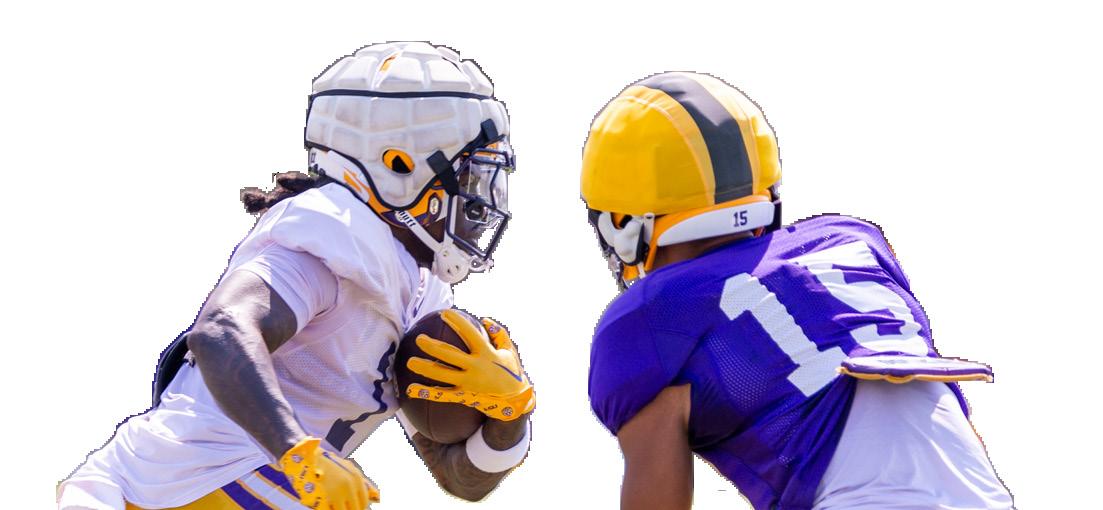
Early returns from LSU football fall camp.



Early returns from LSU football fall camp.
An AI model made by LSU researchers can forecast flood levels in seconds.
Read on page 2


BY LIV TEES Staff Writer
Coastal states face disastrous floods and unexpected storm surges every year, with the amount of damages to life and property growing as global sea levels continue to rise. LSU researchers have developed a forecasting model using AI to track these natural disasters over 100,000 times faster than existing methods.
Over the past five years, eight post-doctoral, research and master’s students led by oceanography professor Dr. Zuo George Xue created a forecast model that calculates potential floods and storm surge levels using an advanced AI system.
“That is the beauty of AI. If this system is online, then when the next hurricane comes, within a few seconds we can finish one set of forecasts,” Xue said. “We want to generate thousands of forecasts to create the ensemble so as to better ‘bracket’ the predictions.”
The Prediction-to-Map, or P2M, framework can calculate a 72-hour forecast in seconds on one computer. This is a huge advancement from using numerical forecasts that would take 500 computers working for 15 minutes.
The team tested the model in 2024 using data collected from Hurricane Nicholas in 2021, which hit Houston and the surrounding area. The goal was to apply the AI model using the data to make a forecast. If it was successful, the AI-generated forecast would match up with the actual weather of Hurricane Nicholas. It did.
“Not only is the computation cheaper, but we also found that the AI model performed better than the previous computer generated model,” Xue said. “So not only is it faster, it’s more accurate.”
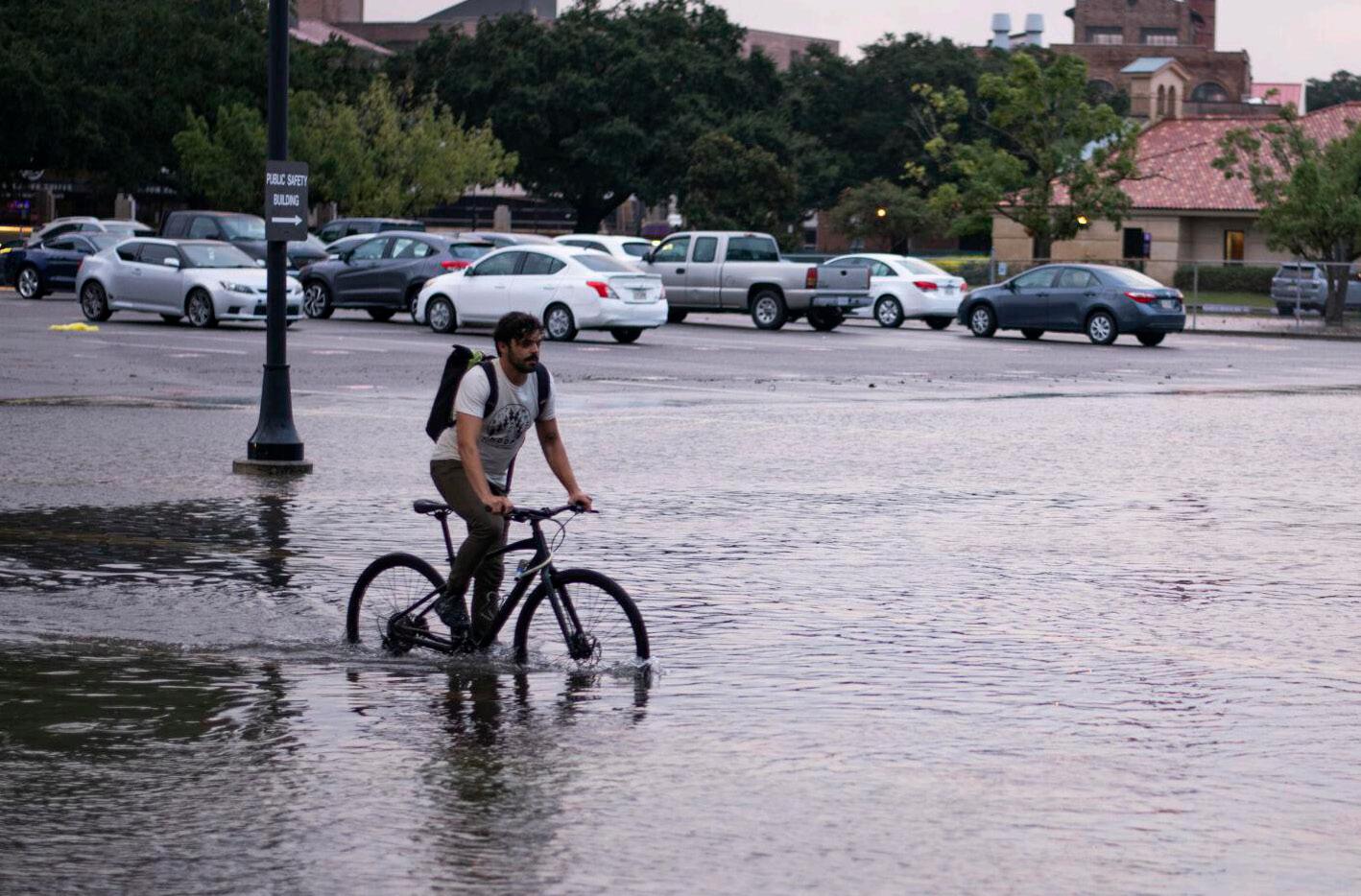
DR. ZUO GEORGE XUE Oceanography professor “ ”
AI in science is booming, and I think it’s in large part due to the availability of good data.
The data Xue uses is collected from various sources — a buoy floating in the gulf to the size and shape of pebbles that wash up on the coastal beaches. The AI model doesn’t work wit out
gathering this data.
As AI continues to be a presence in every sector of society, scientists are using it to its full potential, like the team at LSU. Researchers work hand in hand with the computer system to provide accurate field data and use AI to work through it.
“AI in science is booming, and I think it’s in large part due to the availability of good data,” Xue said.
LSU’s team of researchers are doing something revolutionary and taking risks that will help the 1.5 million residents living in Louisiana’s flood-prone region. For this reason, they have received prestigious federal funding from the U.S. Geological Survey, National Oceanic and Atmospheric Administration, NASA and the Office of Naval Research.
Xue has taught at LSU for 12
years and hopes to continue his work with the AI flood model to make it a widely used tool nationwide. His short term goal is to expand the scope of the forecast from just the Houston area to the entire Gulf Coast and East Coast.
This expansion comes from outside funding, which Xue believes will help drastically in the next two years.
LSU’s location in Louisiana gives the university a special advantage for coastal restoration and fine tuning forecasts to help save millions in property damage.
“I want the LSU community to know that good things happen on our campus,” Xue said. “We are top-notch researchers in the coastal region and one of the university’s priority research areas.”




B-16 Hodges Hall Louisiana State University Baton Rouge, La. 70803
ADVERTISING (225) 578-6090
Layout/Ad Design ASHLEY KENNEDY
Layout/Ad Design REESE PELLEGRIN
CORRECTIONS & CLARIFICATIONS
The Reveille holds accuracy and objectivity at the highest priority and wants to reassure its readers the reporting and content of the paper meets these standards. This space is reserved to recognize and correct any mistakes that may have been printed in The Daily Reveille. If you would like something corrected or clarified, please contact the editor at (225) 578-4811 or email editor@lsu.edu.
The Reveille is written, edited and produced solely by students of Louisiana State University. The Reveille is an independent entity of the Office of Student Media within the Manship School of Mass Communication. A single issue of The Reveille is free from multiple sites on campus and about 25 sites off campus. To obtain additional copies, please visit the Office of Student Media in B-39 Hodges Hall or email studentmedia@ lsu.edu. The Reveille is published biweekly during the fall, spring and summer semesters, except during holidays and final exams. The Reveille is funded through LSU students’ payments of the Student Media fee.
BY PIPER HUTCHINSON Louisiana Illuminator
University of Louisiana at Lafayette President Joseph Savoie has stepped down from his position.
The change was announced Wednesday by University of Louisiana System Board of Supervisors Chairman Mark Romero at a special board meeting. Its members voted unanimously to name Savoie ULL’s president emeritus.
Savoie has served as president since 2008 and oversaw the university’s transformation into a major research institution. In 2022, ULL received the prestigious R1 status in the Carnegie Classifications of Institutions, meaning it has very high levels of research activity. The other R1 universities in Louisiana are LSU and Tulane.
ULL Provost Jaimie Hebert will serve as interim president while a search is conducted. No timeline to choose Savoie’s re-
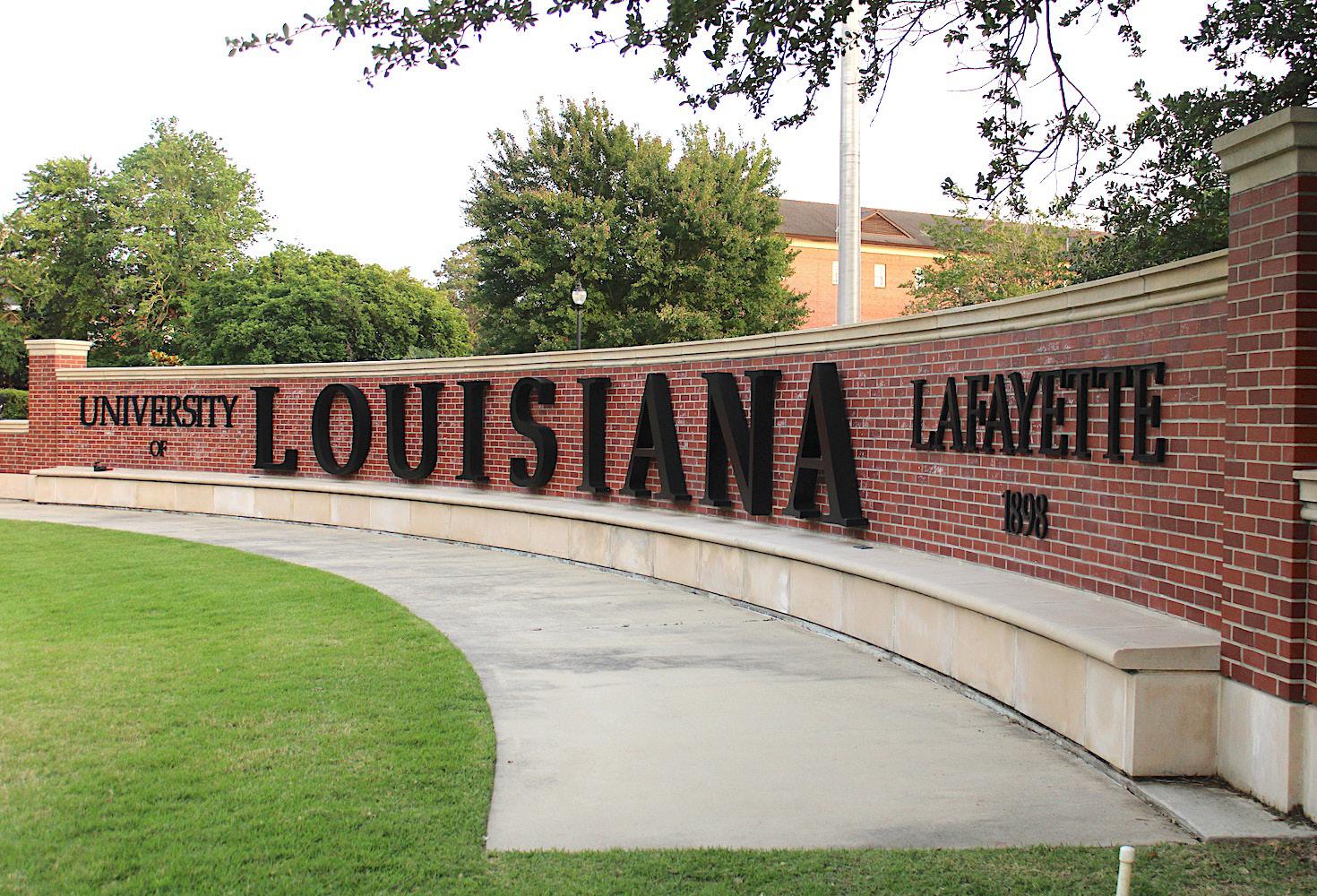
placement has been announced.
“I reached the decision to transition to this new position after months of careful consideration,” Savoie said in a news
release. “Higher education has changed immensely in the past two decades. The expectations on colleges and universities are as great as they have ever been
and meeting those responsibilities to our community today –and to generations that follow – requires new ideas and fresh approaches.”
Savoie’s decision to step down early — his employment agreement was slated to expire June 30, 2026 — came after an unfavorable state audit earlier this year that found repeat findings from the previous year, which earned Savoie sharp questions from the board in April.
Romero said Savoie was not asked to step down due to the audit.
Savoie will stay on at the university as president emeritus.
In an interview after the board meeting Wednesday, Savoie said he intends to take an active role in the administration over the next year, primarily working on external relations, before returning to his faculty position in education.
Before becoming president of
ULL, Savoie was the state’s commissioner of higher education, a role in which he oversaw all of the state’s university and college systems.
Romero said the board has not yet decided on a search timeline for Savoie’s replacement, but one would likely be announced at its August meeting.
The UL System board also announced that University of New Orleans chief financial officer Edwin Litolff will assume the same position at ULL. Before moving to UNO to aid in their financial crisis, Litolff held the same position at Grambling State University.
Savoie’s departure means Louisiana’s two largest universities – ULL and LSU – are without permanent presidents. Former LSU President William Tate announced his departure in May. Matt Lee, vice president for agriculture and dean of LSU’s College of Agriculture, is currently serving as interim president.

BY CHLOE RICHMOND Digital Managing Editor
The inaugural Miss All American pageant has concluded, and Miss LSU 2025 Remi Landry and Miss LSU 2024 Nikhia Sims have left a purple and gold mark in the history books.
The Miss Teen All American Pageant rebranded at the beginning of this year. RPM Productions revived a historic tradition and announced the debut of new Miss All American and Miss Junior All American pageants. Contestants in Miss All American were able to compete for both the national title and their respective state title.
The competition was hosted in Charleston, South Carolina, at the North Charleston Performing Arts Center from July 30 to August 2. Landry is a sophomore and represented LSU at the pageant; Sims is a senior and represented the Capital City region. Also representing Louisiana was Anna Steckler, who currently attends Loyola University New Orleans College of Law, and is an LSU Alpha Phi alumna from Lafayette.
“This pageant was nothing short of incredible,” Landry said to the Reveille. “Some of the most amazing women from around the USA gathered together to compete for the first title as Miss All American.”
The Miss All American Pageant consists of women born between 1996 and 2006, ages 19 to 29, and evaluates contestants based on three different score categories: evening gown, swimsuit and interview. Each phase is scored separately and worth a third of the contestants’ overall score.
The evening gown category “is the most elegant” category and serves as an opportunity for contestants to show “personal-
ity through individual style and flair,” according to the Miss All American website.
Similar to the evening gown category, the swimsuit category is “a moment to embody strength and style.” The contestants take the stage for this category “where confidence and charisma shine.”
The last score category is the interview phase. The contestants share with judges what they’re passionate about while also putting their personality at the forefront of conversation.
“Throughout the preparations and week of the pageant, I learned more about myself than I ever thought I would,” Landry said. “Being one of the youngest in the Miss category, comparison and fear of judgment was a struggle. But I learned you can only offer what you hold, and found strength in my own story.”
Landry was named fourth runner-up and Miss Louisiana
All American. She represented LSU with a gold dress for the evening gown category, sported a black one piece for the swimsuit category and completed her interview category in a white jumpsuit with a bow laid down the bodice from the front of the neckline.
“Being a part of the Top 5 and crowned as Miss Louisiana All American is an experience I will never forget,” Landry said. “This week was a reminder that no dream is ever too big and you are exactly where you are meant to be.”
Steckler was named third runner-up in the competition. Ahead of her was second runner-up Cheyanna Frazier, who represented Austin, and first runner-up Breauna Washington, who represented Orlando. McKinley Farese of West Tennessee was named the winner and holds the title of first-ever
Miss All American.
In addition to the main competition titles, contestants were also competing for five different auxiliary awards. Out of the people’s choice, influencer, photogenic, congeniality and red carpet awards, Sims was named Most Photogenic.
“Although it wasn’t the outcome I had hoped for, I had an incredible time with this fabulous group of ladies,” Sims said in an Instagram caption. “Thank you to everyone apart of my journey, especially my amazing sponsors @deltazetalsu. Love y’all seauxxx much!”
For Sims’ three phases, she was the other half of LSU colors with a purple evening gown, took the stage in a pink two piece bikini and interviewed in a white dress with cloak sleeves draped down her arm.
Louisiana is no stranger to pageantry. Shelley Hennig was the first contestant from Louisiana to win the Miss Teen USA title in 2004. She was born in Metairie and went to Destrehan High School.
The prize included a scholarship to the New York Conservatory of Dramatic Arts, kickstarting what eventually turned into Hennig’s successful acting and modeling career. She’s well known for her roles in “Days of Our Lives,” “The Secret Circle” and “Teen Wolf.”
Katherine Haik added to Louisiana’s pageant win column after being named Miss Teen USA 2015. Haik was born in Covington and became the youngest contestant to ever win Miss Teen USA at 15 years old.
Haik is an LSU alumna and graduated with a degree from the Manship School of Mass Communication in 2022. She was also a member of the Kappa Delta sorority and went to Franklinton High School.
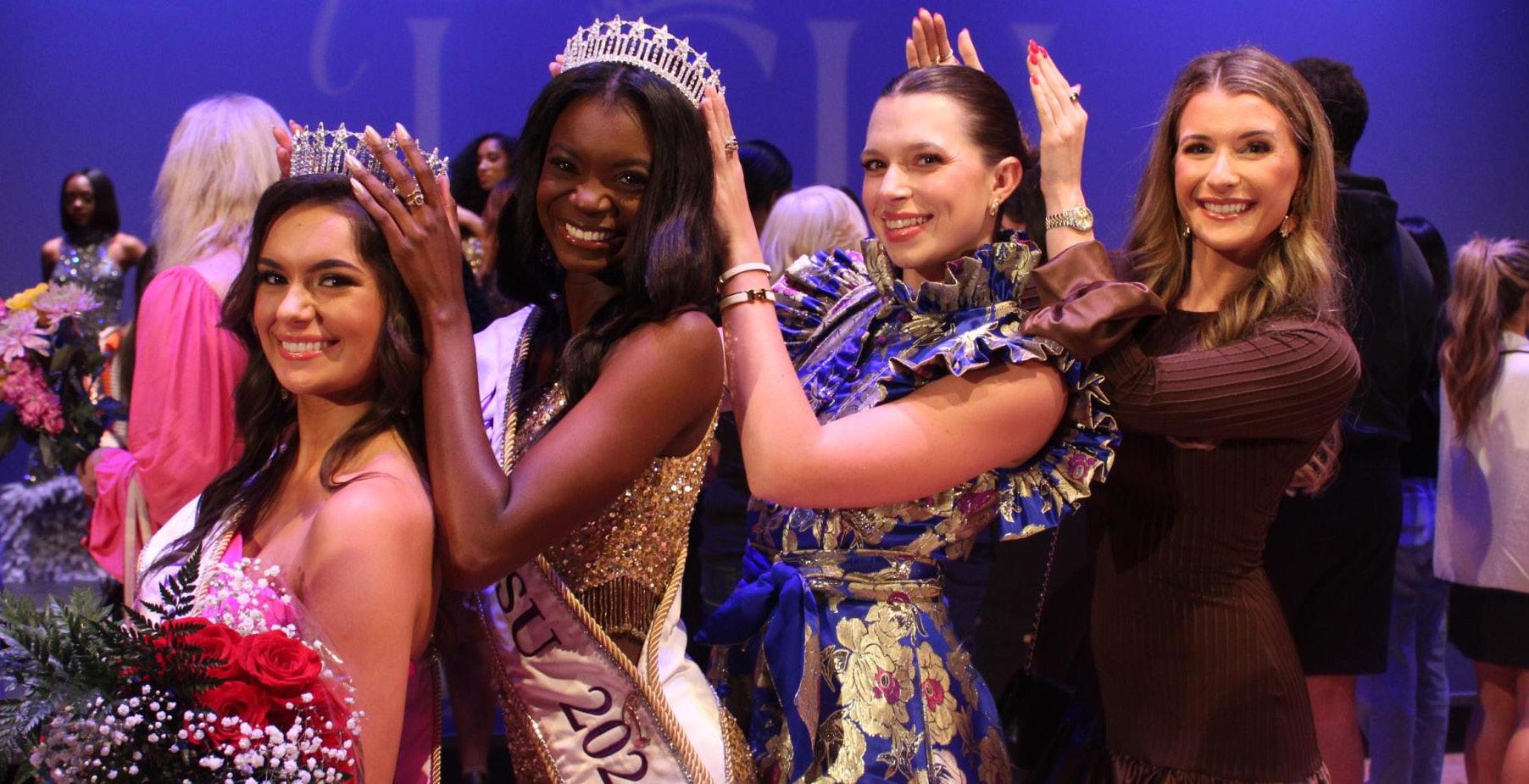

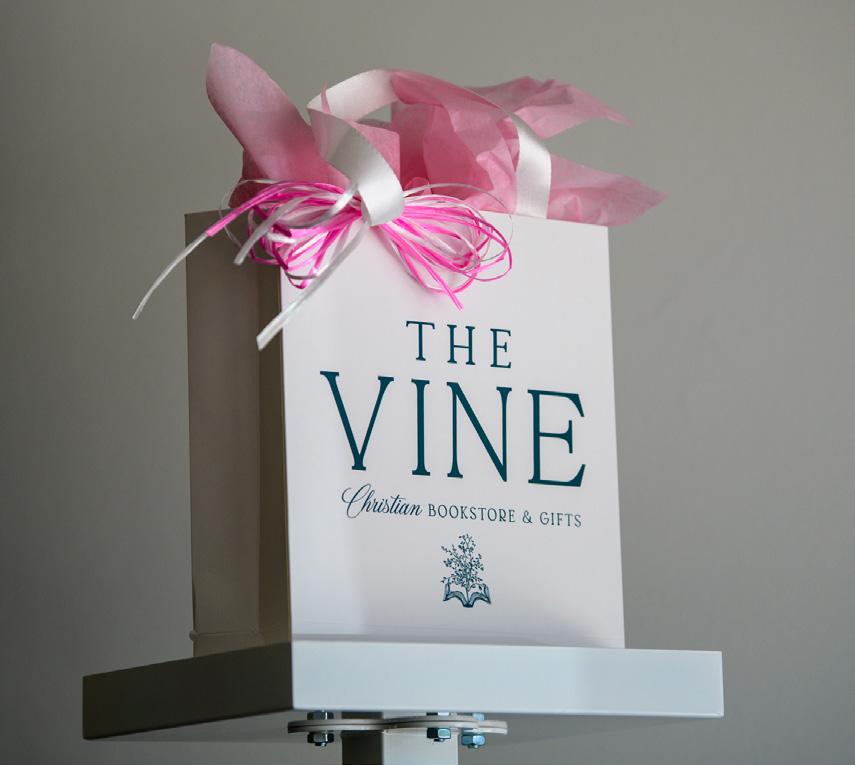






BY TRE ALLEN Staff Writer
Cleats, pads, helmets and the sweet sound of intensity on the football field is near for the Tigers.
LSU took the practice field for the first time on Wednesday as all eyes were on a team with championship aspirations. Here are our three takeaways from the first day of fall camp.
New kids on the block add depth
The main story for the Tigers is a new wave of players. LSU made it a goal to bring in multiple players who can help out through the transfer portal and straight out of high school. Whether it’s the defensive line or the wide receiver groups, every position is tremendously deep.
The Tigers brought in playmakers, and they’ve turned some heads. Some guys that stood out were defensive tackle Bernard Gooden, wide receiver Destyn Hill and wide receiver TaRon Francis.
Gooden, who transferred from the University of South Florida, was in the backfield multiple times, whether it was for a tackle for loss or a sack. He’s already adding the pressure that LSU desperately needs, giving the team options for when the season comes around.
Hill, a transfer from Florida State, decided to come back to his home state of Louisiana and suit up for the Tigers this fall. In a group that has multiple returning players such as Aaron Anderson, Chris Hilton, Zavion Thomas and Kyle Parker, along with transfers such as Barion Brown and Nic Anderson, it was Hill who caught the eyes of everyone around him.
He was a consistent option for quarterback Garrett Nussmeier, who was finding him all over the field, both between the hashes and down the field. Hill made an impressive grab over defensive back Ashton Stamps and made a one-handed catch on a short curl route that looked to be tightly covered.
For a player who not many people thought would see the field a lot this year – just because of the talent in front of him – he was running a lot with the first team and might be someone to watch out for this upcoming season.
Hill is a prime example of just how deep this position group is.
Head coach Brian Kelly is more
than confident in his guys.
“We have eight SEC highcaliber receivers,” Kelly said. “These guys are really good football players, and so it’s incumbent upon us to put them in a position to succeed for themselves and for our team.”
True freshman Francis probably made the catch of the day over his fellow freshman defender, DJ Pickett, who was smothered all over him and in great coverage.
The kid who they call “Manchild” is already living up to his nickname.
Nussmeier’s decision-making skills improve
For Nussmeier, he’s in one of the best positions for any quar-
terback around the country.
With a tremendous number of playmakers around him with speed and consistency, people have Heisman-level expectations.
He’s displayed the talent that everyone saw glimpses of last year. His deep ball looked great, hitting multiple receivers down the field and placing it where only his guy can catch it.
We already knew Nussmeier had the arm and the accuracy, but the main course of his problems was decision making.
Multiple times last season, he tried to make something out of nothing instead of taking what was right in front of him. He’s a gunslinger, so it’s in his DNA to
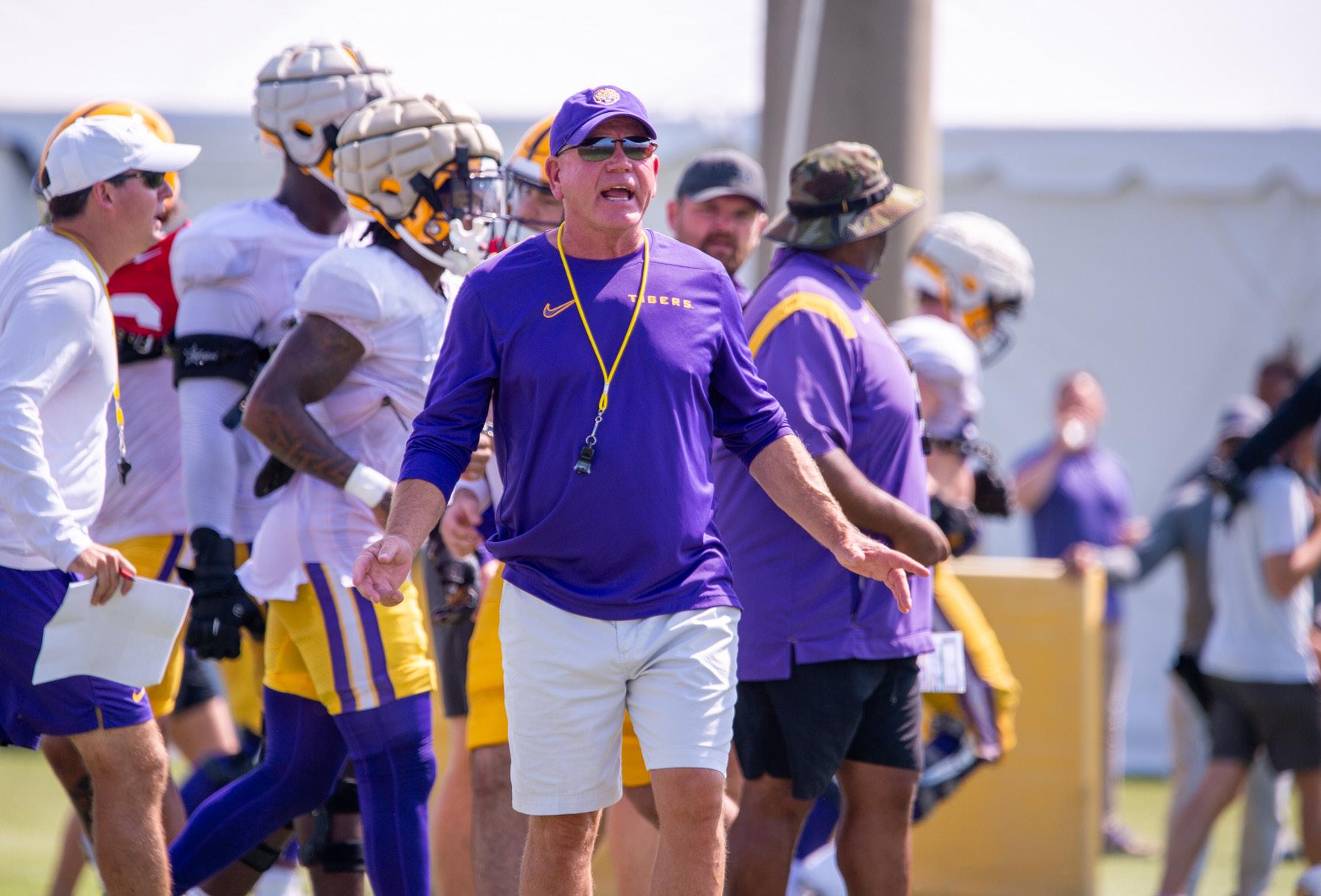
try to make those tight throws, but there has to be a fine line of when he should and when he shouldn’t.
He took the simple checkdowns to his running backs and tight ends rather than going deep, which was tightly guarded. Kelly emphasized that’s one of the things he needed to work on, and he’s been taking the steps to do so.
“We’ve documented some of the things that he needs to be better at, and that is, his worst play needs to be zero,” Kelly said. “Zero is okay. We can live with zero. What we can’t live with is catastrophic mistakes, and I think you have to live through that to know what your limits are. He knows what those limits are in terms of, you know, managing a bad play and making it zero. I think that’s experience.”
Taking the next step on defense with veteran guidance
At the beginning of fall camp, improvement is all you can ask for until the Tigers’ first game against Clemson. That doesn’t just go for the quarterback – it goes for everyone.
One side of the ball that showed improvement last year and hopes to take another step forward is the defense.
All LSU fans want to forget what happened in 2023 with one of the worst defenses in program history, and the hire of defensive coordinator Blake Baker did exactly that.
We saw a more intense and aggressive defense that never gave up more than 400 yards a game. While it was an improvement, there were still times this past season when the defense had broken coverages or made
, page 7
BY AINSLEY FLOOD Sports Editor
Tens of thousands of Jell-O shots later, a national championship isn’t the only thing LSU brought back to Baton Rouge.
On Wednesday, the LSU Student Food Pantry received its $52,390 check from Rocco’s Pizza and Cantina in Omaha, Nebraska. The annual Jell-O Shot Challenge takes place during the College World Series, where each team’s fans compete to rack up the highest tally.
Some of the proceeds are given back to the local communities,
specifically their designated food banks.
The purple and gold crushed the other seven teams, and with a mighty score of over 50,000 shots sold, that money comes right back to campus.
Jennifer Cristina is the manager of operations for LSU Campus Life and the food pantry and will oversee how these new funds will be put to use.
“I’m so excited that Rocco’s has made this contribution to us and all of the other pantries across the country and all the other schools,” Cristina said. “I’m so grateful to
them that they contribute so much of the money that they raised in that challenge to different charities everywhere.”
After 11 days, $130,009 was raised in total, and an extra $10,000 was donated by Louisiana local and Raising Cane’s owner Todd Graves.
LSU’s food pantry is a campus resource available to students struggling with food insecurity. According to Cristina, the pantry sees up to 450 students a day during the school year, and about 200 in the summer.
To feed that many people every
day, the pantry has to stay stocked, and Rocco’s donation will be used for exactly that. Cristina plans for the money to be strictly dedicated to food supply-related necessities.
“That means that no matter when you come to the pantry, you can still get some food items to be able to bring home and have a meal,” Cristina said.
In anticipation of the donation, Cristina’s been able to make decisions more freely about what can be purchased. With some flexibility in how they can spend, it gives the pantry some breathing room ahead of the fall semester.
Cristina said this postseason in particular was very exciting because she knew if the team could just get to Omaha, the fans would show up.
The competition was never close after LSU took the early lead. As the scoreboard updated day after day, it showed that the Tigers weren’t only dominating on the field.
The top three final scores were Arkansas with 9,075, Coastal Carolina with 9,117 and LSU with 52,390 shots sold.
BY ROSS ABBOUD Staff Writer
LSU football started fall camp on Monday, and two position groups have turned heads through three days of practice.
On offense, the wide receivers are the strongest and deepest group, and on defense, the defensive backs will have a chance to shine.
The wide receiver room is returning Aaron Anderson, Chris Hilton, Zavion Thomas, Kyle Parker, Kylan Billiot and Jelani Watkins. The newcomers include two freshmen and three transfers.
The two freshmen are fourstar and No. 1 receiver in Louisiana Taron Francis and four-star and No. 14 overall player in Louisiana Phillip Wright.
The transfers were all starters at their former schools. Barion Brown started at Kentucky, Destyn Hill started at Florida State before an early-season injury and Nic Anderson started at Oklahoma.
“We have eight SEC high-caliber receivers,” LSU head coach Brian Kelly said after the first day of fall practices.
Not only are they skilled, they’re fast. Thomas, Brown, Hilton, Watkins and Anderson run sub-4.50 40-yard dashes.
LSU is in the debate for the title of “Wide Receiver University.” If this group of receivers can go on to the NFL and make impacts, it’ll only cement LSU’s legacy.
However, LSU is also referred to as “Defensive Back University,” and over the last two or three seasons, the Tigers have struggled to produce the type of defensive backs the NFL is used
blunders on the field.
Players such as safety Tamarcus Cooley from NC State, cornerback Mansoor Delane from Virginia Tech and defensive end Jack Pyburn from Florida were guys who were constantly on the field with the first team.
With multiple options at every position, it’s hard to point out just a few guys who can make an impact. Two guys whose presence is irreplaceable are linebackers Harold Perkins Jr. and Whit Weeks.
The player who’s wearing the historic No. 7 and the other who was the heart and soul of the defense last season have taken up the task of being leaders for their team.
“The temperature is a little bit different when those two guys are in the room,” Kelly said. “It’s hard to replace great players, but it’s even harder to replace great leaders, and those guys lead by example and make a huge difference.”
to seeing from them.
But this year, it’s different. Kelly went out and rehired Corey Raymond, who was the defensive backs coach from 2012-2021.
Raymond produced names like Eric Reid, Jalen Mills, Jamal Adams, Tre’Davious White, Greedy Williams, Grant Delpit and Derek Stingley Jr.
In his first recruiting cycle for 2025, he secured one five-star and four four-star defensive backs out of high school and three proven transfers.
This season, LSU has its deepest defensive back position group on campus since 2019.
Ashton Stamps, PJ Woodland and Michael Turner Jr. are returning at cornerback, and Jardin Gilbert, Dashawn Spears and Javien Toviano are returning at safety.
But the newcomers are who have turned the most heads, with transfers AJ Haulcy, Mansoor Delane and Ja’Keem Jackson competing for starting spots in the secondary — and five-star recruit DJ Pickett, who measured at 6 foot 5 inches at fall camp.
The secondary is home to some of the most contentious position battles of the offseason, especially at cornerback. Returnees Stamps and Woodland had solid seasons last year but fell victim to inconsistency at points. Delane, Jackson and Pickett each have ample talent and could easily push one of the holdovers to the bench.
LSU’s roster this year is loaded with talent and is one of the deepest teams in college football. With a revamped staff and a make-or-break season for Kelly, the Tigers start their path to making the playoffs and winning a national championship.
PANTRY, from page 6
“We build teams that win, right?” Cristina said. “So it’s helped us make this team a winning team as well.”
Cristina’s goal is to build a community and spread the word to more students, potential volunteers and donors about the opportunities the pantry offers.
She encourages students in need to stop by on the first floor of the Student Union, and anyone interested in community service to find the LSU food pantry on TigerLink.
“The most exciting part for me is getting our name out there, because a lot of people don’t know we exist,” Cristina said. “I think it’s important to spread that message, but also to help gain awareness that we’re here, not just during

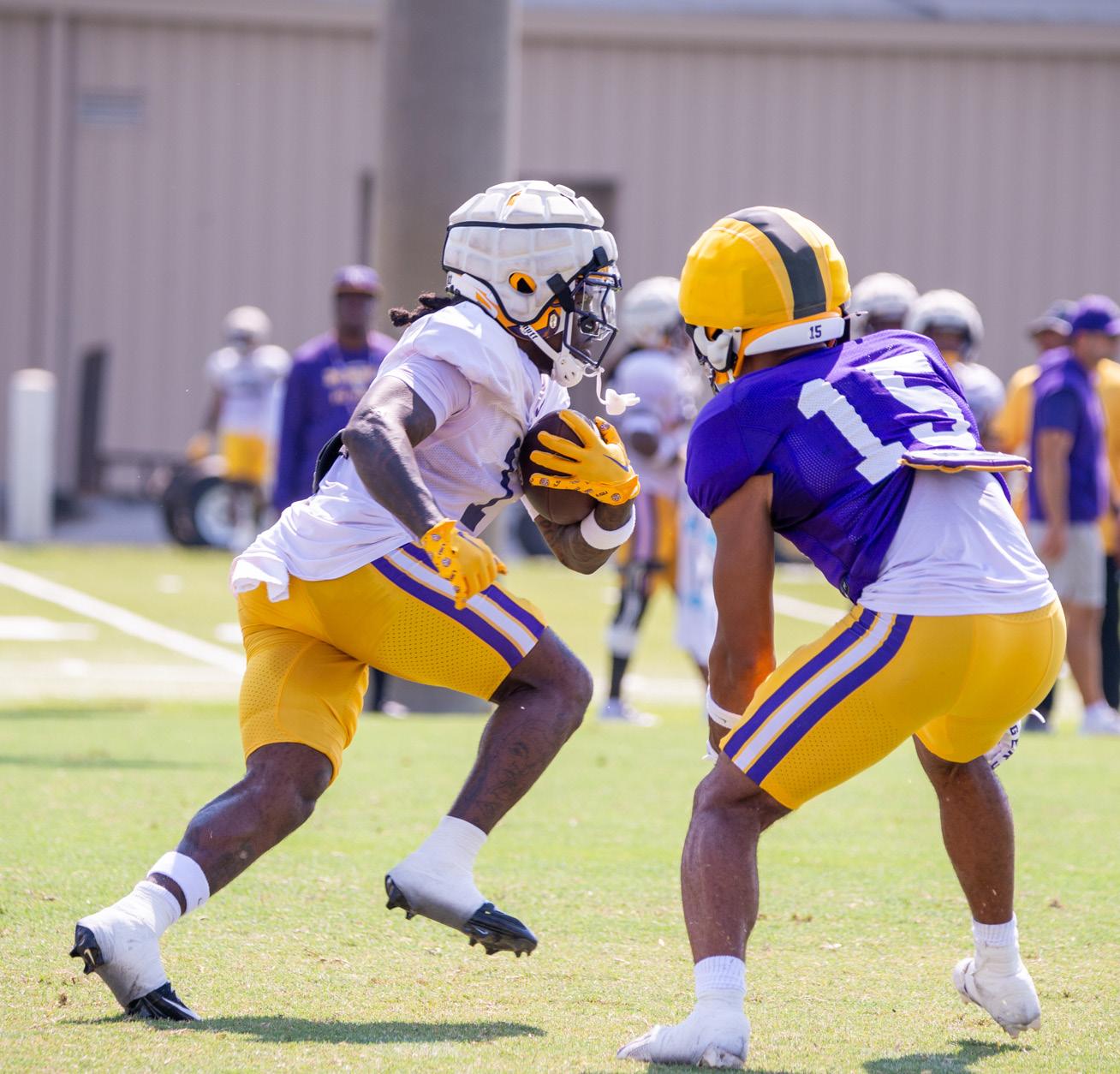
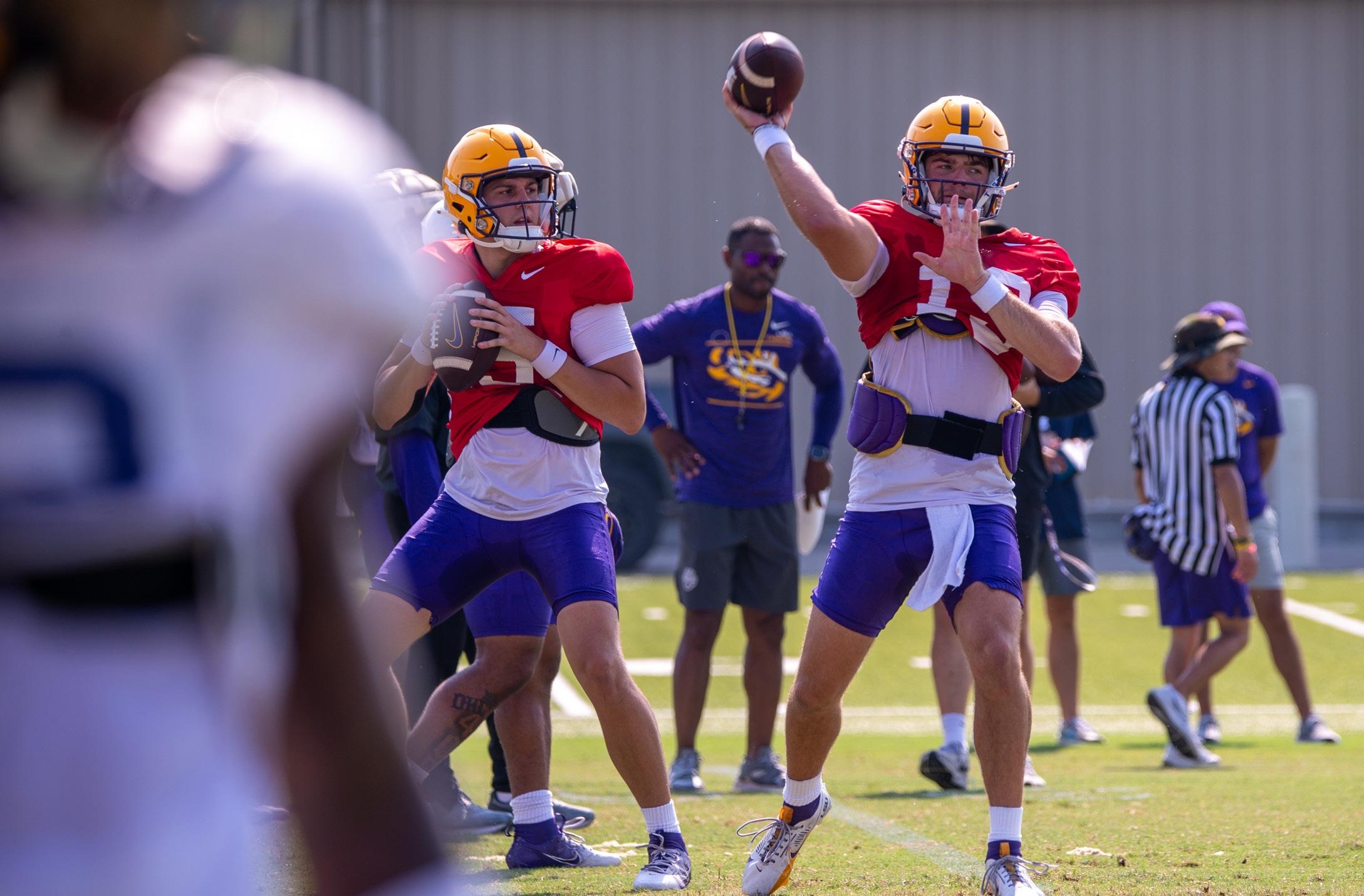
BY ROSS ABBOUD Staff Writer
Rutgers has hired LSU athletics executive deputy director of athletics and chief operating officer Keli Zinn.
Zinn joined the LSU staff in 2022 as the executive deputy director of athletics. She is reported to have had a hand in the NIL revenue-sharing plan and the new LSU arena project.
She also supervises all 21 varsity programs and directly oversees football and gymnastics, revenue generation and strategic initiatives.
Zinn oversees all external and internal affairs of the athletics department, working closely with university leadership, having worked closely with former LSU President William Tate, who is now the Rutgers university president.
Zinn’s contract will reportedly be a five-year contract with a base salary of $1.35 million. This would make her the highest-paid athletic director in school history. The base salary can rise if the athletic department hits any of the incentives in the deal, according to NJ Advance Media.
The Rutgers Board of Governors is approved the contract on Wednesday to secure Zinn as the program’s newest athletic director.
Zinn is a graduate of West Virginia University and served as their interim athletic director in 2015 before being named WVU’s deputy athletics director in 2016.

the
limiting your screen time is for the best

This was the summer to limit screen time.
Cellphone on silent was my tagline.
In many ways, I pretended like it was a time long ago, before iPhones ruled the world. I used summer as an opportunity to put my phone away and touch grass.
Don’t get me wrong. Of course there were days I snapped pictures, ran to Google to fact check, used my calculator — because I’m a writer, not a mathematician — and so on and so forth. Our phones are convenient tools that help us in a multitude of ways.
It’s the social media platforms I largely avoided.
This summer was the first time in a long time I went days, even weeks, without posting consistently to my Instagram. I haven’t known a life where a variety of media doesn’t exist. Instagram, Snapchat, YouTube, TikTok have all dominated my days. Social media has become a major part of society as a whole. When I was younger, I thought anyone who bashed social media was just a hater. However, it was their approach I found unfavorable; overall, their debate had some fair points. Like a lot of things in life, social media has the power to be both beneficial and disadvantageous. These apps provide users everywhere with the virtual power to promote positivity or negativity.
Where I stand with social media today is simple. I see many pros. I think it’s great for networking, business opportunities, staying in touch with friends and family and shar-
ing educational resources and life hacks. For example, we’ve all seen the birthday cake cutting videos.
Not to mention, social media has opened doors for thousands who didn’t formerly have access to certain people, places and things. I’ve seen stories of women who could leave abusive situations because they were able to make their own income through TikTok.
I’ll never discount the positive side. However, it’s overshadowed all too often by negative images and comments where the triggering content lives.
I could go without seeing overexposed celebrities, the harmful portrayal of body image, online predators, videos of the ugliest parts of our history that are repeating itself and the hate that still is prevalent in our world.
On a somewhat unserious but serious note, my latest pet peeve is
how we’ve lost the element of surprise regarding cinema. Over the last week, you can’t scroll without seeing images or videos of “The Devil Wears Prada” sequel. Unfortunately, there have been spoilers galore due to onlookers’ social media posts.
Filming in public, especially on the busy streets of New York, is not like it was during the original production in 2005. Seeing Meryl Streep and Anne Hathaway on West 39th Street was special. A decade later, people are reliving that experience, but this time around they’ve brought their smartphones and are ruining it for the rest of us.
Anyone can be paparazzi these days. By the time the movie actually hits theaters, we’ll already have seen most of the film, including any scenes that were meant to be a surprise.
Social media can be a roller-
coaster of emotions. One minute you’re laughing, the next you’re crying, then nostalgia creeps up on you, unlocking memories you were happy to forget.
You ultimately have control over what holds space in your life. If you want to take little breaks offline, you can. If you want to retire from the apps forever, go for it.
While I never see myself deactivating social media, I will continue taking breaks.
As seen in the documentary “Billy Joel: And So It Goes,” the legendary Joel once said, “I would like to retire from my public life.”
Sting said, “There’s a time when you have to be silently stoic.” Both sentiments resonate with me. As I said before, cellphone on silent.
Ava Francis is a 22-year-old journalism major from New Orleans residing in Texas.
The Reveille (USPS 145-800) is written, edited and produced solely by students of Louisiana State University. The Reveille is an independent entity of the Office of Student Media within the Manship School of Mass Communication. Signed opinions are those of the author and do not necessarily represent the views of the editor, The Reveille or the university. Letters submitted for publication should be sent via e-mail to editor@lsu.edu or delivered to B-39 Hodges Hall. They must be 400 words or less. Letters must provide a contact phone number for verification purposes, which will not be printed. The Reveille reserves the right to edit letters and guest columns for space consideration while preserving the original intent. The Reveille also reserves the right to reject any letter without notification of the author. Writers must include their full names and phone numbers. The Reveille’s editor in chief, hired every semester by the LSU Student Media Board, has final authority on all editorial decisions.
“If it keeps up, man will atrophy all his limbs but the pushbutton finger.”